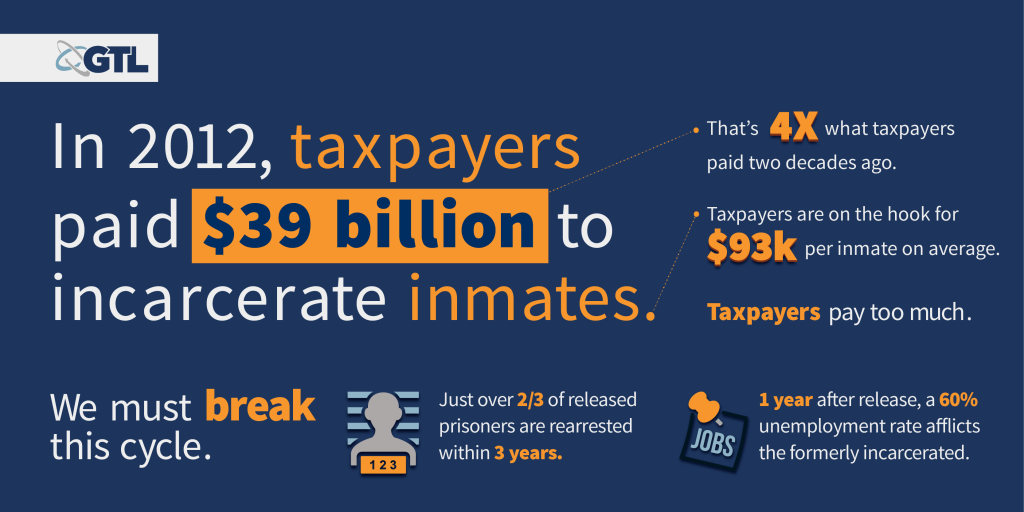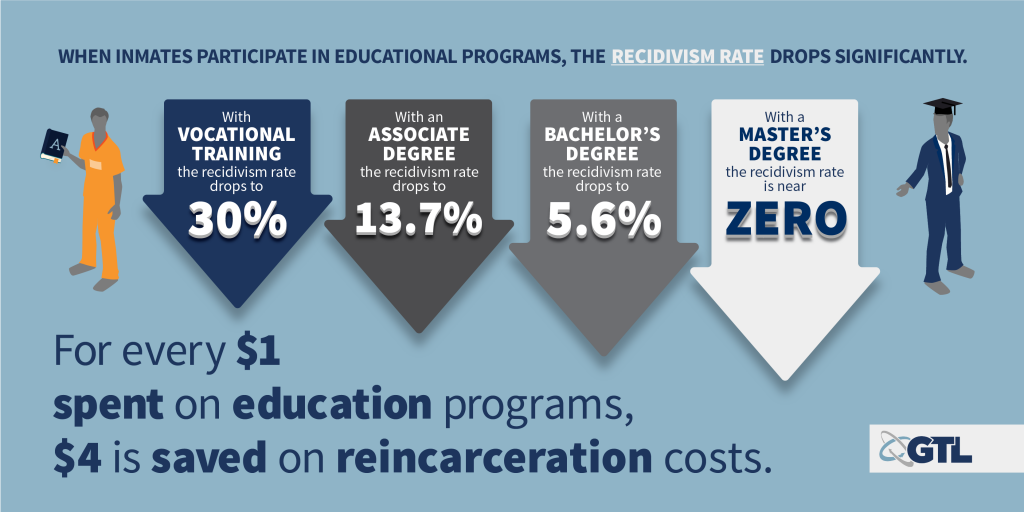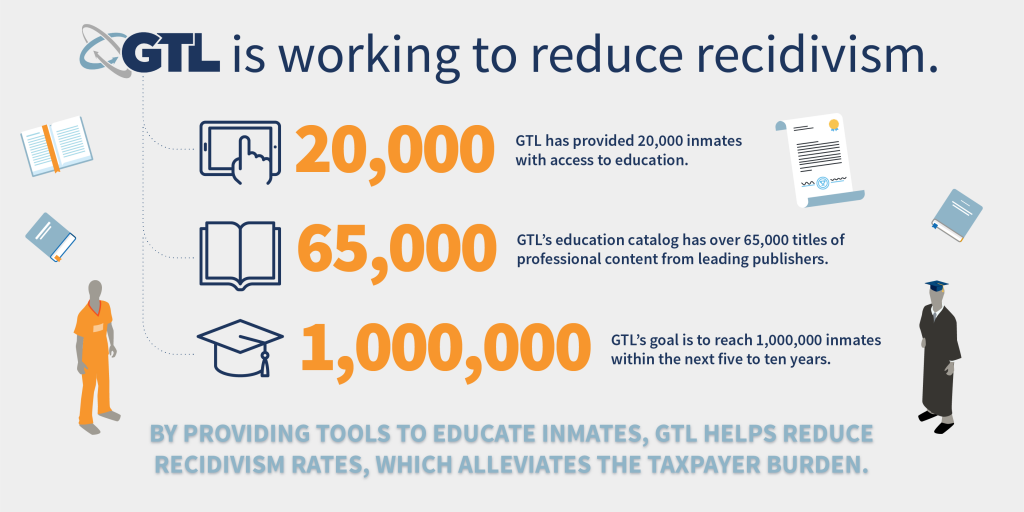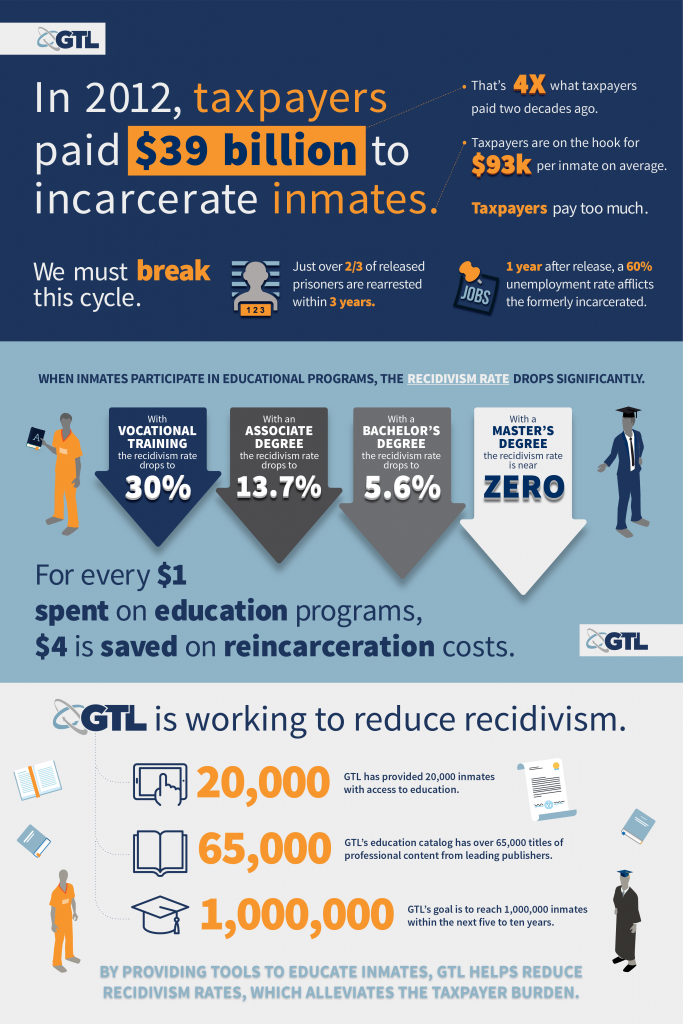At GTL, we understand why people are hesitant to invest in education for inmates. People often ask, “Why should I pay for prisoners to get a college education, while I’m living paycheck-to-paycheck?” Our response is that educating our inmates saves taxpayer money that would be otherwise spent on the costs of incarcerating inmates. It’s an investment we make today that will save us money down the line.
It’s clear that taxpayers pay far too much to incarcerate inmates in the United States. Corrections expenditures have nearly quadrupled over the past two decades. In 2012, incarceration cost taxpayers $39 billion, $5.4 billion more than the $33.5 billion reflected in corrections budgets alone.
The cost of incarceration is so high because inmates frequently find themselves stuck in a cycle of incarceration, rearrest, and return to prison. A National Institute of Justice study found that within three years of release, about two-thirds (67.8%) of released prisoners were rearrested. However, if we can break that cycle and prevent inmates from returning to prison, we can provide relief to taxpayers who are forced shoulder the costs associated with incarceration.
Education can help break this cycle. Providing inmates with an education drastically reduces the likelihood that they will reoffend and return to prison. For example, when inmates receive vocational training, the recidivism rate drops to approximately 30%. With an associate’s degree, recidivism drops to 13.7%, and with a bachelor’s degree, it drops to 5.6%. Once an inmate receives a master’s degree, the recidivism rate is so low that it’s effectively 0%. It’s simple – if inmates can live a meaningful, productive lives after serving their sentences, taxpayers won’t be forced to pay for their incarceration.
Data shows that investing in inmate education pays off. A recent study from Lois Davis of the RAND Corporation found that for every dollar spent on inmate education programs, between four and five dollars are saved on reincarceration costs.
Our efforts in Colorado are just the beginning. Within the next five to ten years, we hope to reach 1,000,000 inmates, providing them with access to education and opportunities for a better life after they’ve served their time.
Ultimately, it is a false choice to suggest that Americans must choose between educating our prisoners and taking money from the non-incarcerated. In fact, it’s quite the opposite. Investing in inmate education will save taxpayers money that would otherwise be spent on incarceration costs, and prepare the incarcerated to live productive, meaningful lives after their release.
Click here to download the full infographic to share with your networks and help us spread the word about the benefits of educating inmates.







